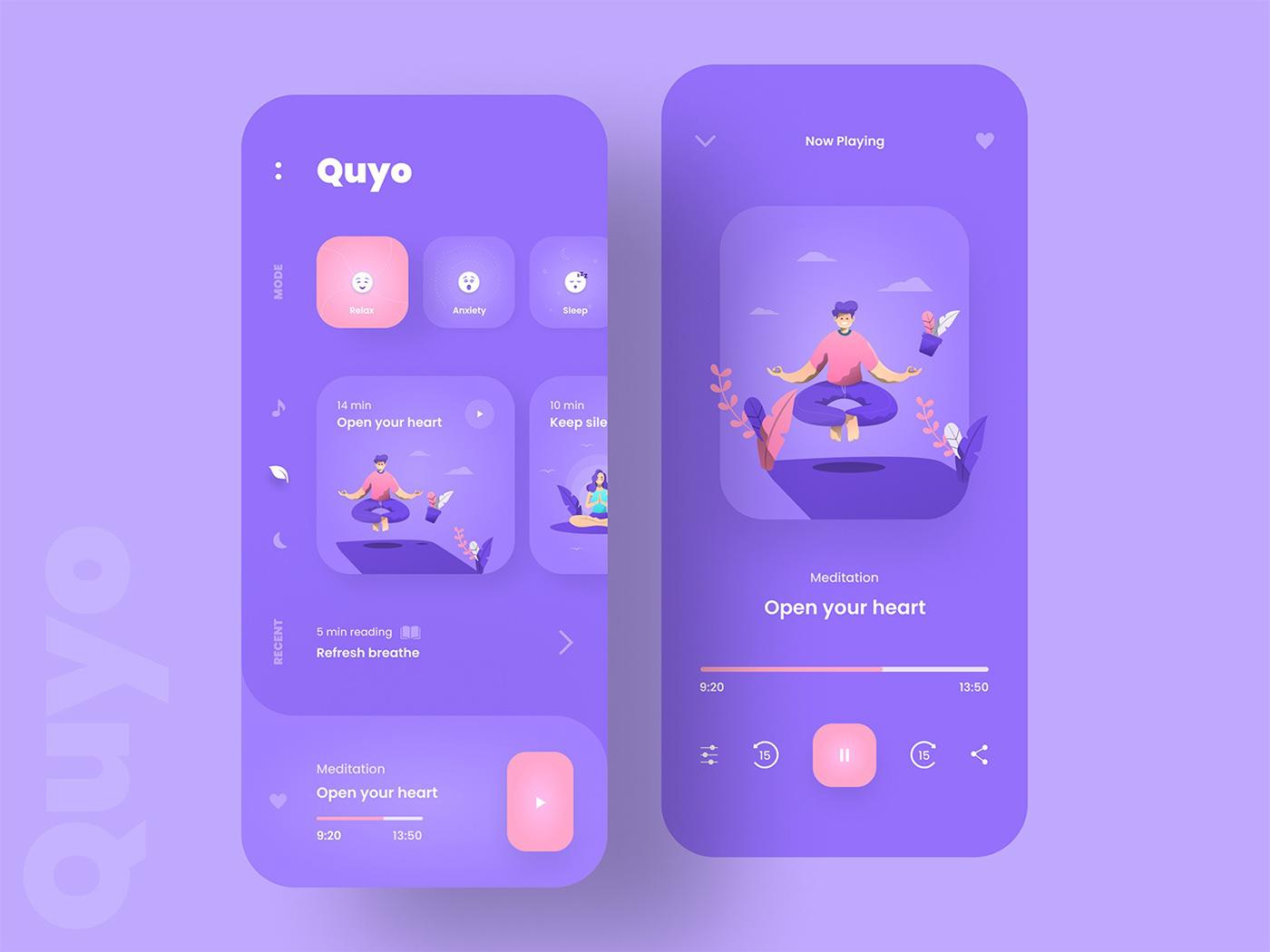In our fast-paced world, where the cacophony of daily life often drowns out our inner peace, the rise of meditation apps has offered a welcomed refuge. Yet, beyond their functionality, the aesthetic appeal of these digital sanctuaries can significantly impact our experience, inviting us to pause, breathe, and find solace in the present moment. This article explores the most lovely meditation app designs, where user experience intertwines with visual serenity, creating environments that beckon us to engage more deeply with the practice of mindfulness.From calming color palettes to intuitive layouts, discover how thoughtful design enhances not only usability but also the very essence of meditation itself—encouraging us to reconnect with our breath and embrace tranquility in a chaotic world.Join us as we journey through these serene digital spaces and uncover the artistry behind the apps that make every inhale and exhale a graceful escape.
Captivating Visual aesthetics and Soothing Color Palettes
The essence of a meditation app’s interface lies in its ability to transport users into a realm of tranquility through its visual elements. Soft gradients blending from pastel pinks to calming blues can envelop the user in a serene atmosphere, encouraging relaxation with every interaction. Thoughtfully chosen icons and illustrations integrate seamlessly, representing mindfulness concepts without overwhelming the senses.Each design choice serves a purpose, from the placement of buttons, which invite gentle nudges at the right moment, to the spacious layouts that evoke a sense of freedom and ease. Here are some essential design elements that enhance visual appeal:
- Fluid transitions that mimic natural movement.
- Whitespace to create breathing room for the mind.
- textured backgrounds reminiscent of nature.
Complementary color palettes can transform a simple app into a sanctuary. Variations of earthy tones paired with vibrant accent colors breathe life into the user experience while maintaining a soothing aesthetic. A structured approach to color theory can heighten feelings of calmness and focus.Such as, using shades of green can evoke tranquility, while muted yellows may inspire optimism. To illustrate this further, consider the following table highlighting effective color associations in meditation app design:
| Color | Association |
|---|---|
| Soft Blue | Calmness |
| Lavender | Serenity |
| Warm Beige | Comfort |
| Mellow Green | Balance |

Intuitive navigation that Encourages Mindfulness
In a world overflowing with distractions, a meditation app with intuitive navigation can be the sanctuary we seek. By incorporating sleek, minimalistic design elements and user-pleasant interfaces, these apps create an surroundings conducive to mindfulness. The layout should feature easy-to-find options and seamless transitions between activities. Users should be able to access various meditation techniques—be it guided sessions, ambient sounds, or timer functionalities—without navigating through convoluted menus. This simplicity invites users to focus on their experience, allowing them to breathe deeply and engage fully in the present moment.
Such design choices often include the use of calming color palettes and soft typography that enhance the overall experience. App creators are increasingly opting for a tactile, responsive interface that reacts to user input, adding an element of flow to the navigation. Here are some essential features that contribute to an unforgettable experience:
- Swipe Gestures: Enable users to navigate effortlessly through options.
- Personalized Dashboards: Present tailored content based on user preferences.
- Visual Cues: Utilize icons and animations to guide users intuitively.
- Soundscapes: Foster an immersive environment with background sound options.

Engaging Features that Enhance the Meditative Experience
To create a truly immersive meditative experience, apps must leverage features that resonate deeply with users’ senses and mindset. Intuitive navigation and soothing color palettes are paramount, allowing users to access content effortlessly while maintaining a serene visual atmosphere. Integrating ambient soundscapes and nature-inspired backgrounds enhances focus and deepens relaxation. Users appreciate the ability to customize their sessions,including setting their own timers or selecting specific themes,which fosters a sense of personal ownership over the practice.These thoughtful elements not only improve usability but also encourage users to engage regularly with their meditation journey.
Moreover, incorporating visual elements such as animated graphics or guided visualization can significantly elevate the atmosphere.As an example, a dynamic breathing guide that visually pulses in sync with the recommended inhalation and exhalation can help users establish rhythm and enhance mindfulness. Additionally, social features, like sharing achievements or participating in community challenges, can motivate users to sustain their practice. Below is a table highlighting key engaging features commonly found in top meditation apps:
| Feature | Benefit |
|---|---|
| Guided Sessions | Structured support for beginners. |
| Progress Tracking | Encourages consistent practice. |
| Community Support | Fosters a sense of belonging. |
| Personalization Options | Tailors the experience to individual needs. |

Personalization for a Tailored Journey to Inner Peace
Imagine navigating through a world of tranquility, where every tap on your screen feels like a gentle breath. This is the essence of user experience design in meditation apps, where personalization crafts a unique journey tailored just for you. By tapping into user preferences, these apps offer:
- Customized Meditation Paths: Users can select themes that resonate with their inner self, allowing for a connection that feels deeply personal.
- Dynamic Progress Tracking: Visual representations of your growth provide motivation and reassurance, reminding you of your journey towards calm.
- Adaptive Soundscapes: From nature sounds to soothing music, experiences can be tailored based on your mood, reinforcing relaxation in real-time.
Moreover, the beauty of these apps lies in their ability to transform user data into meaningful experiences. By creating an intuitive interface, they allow for smooth navigational flows that eliminate distractions, making it easier for users to embrace mindfulness. Key features often include:
| Feature | Description |
| Personalized Reminders | Gentle nudges that encourage you to take a moment for yourself, tailored to your daily schedule. |
| Goal Setting | Users can set their meditation goals in duration or frequency,making mindfulness achievable. |
Final Thoughts
As we conclude our exploration of the most beautiful meditation app designs, it’s clear that user experience is more than just functionality—it’s about creating an environment that invites us to breathe deeply and find our center. These thoughtfully crafted interfaces not only guide us through our mindfulness journeys but also transform the act of meditating into a visual feast for the senses.
In a world that often feels chaotic, these apps serve as reminders that design can play a pivotal role in our pursuit of tranquility. Whether you’re a beginner seeking solace or a seasoned practitioner looking for a fresh perspective,the marriage of aesthetics and usability can enhance your meditation experience in profound ways.As you embark on or continue your journey toward mindfulness, let these stunning designs inspire you to create moments of calm amidst the noise. Remember, the right environment can ignite your practice, making every breath a step closer to peace. So, choose an app that resonates with you, and let the journey unfold—one mindful inhale and exhale at a time.



